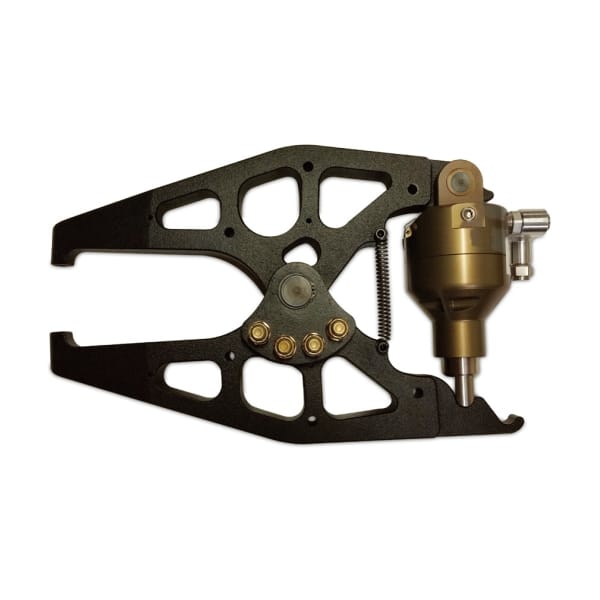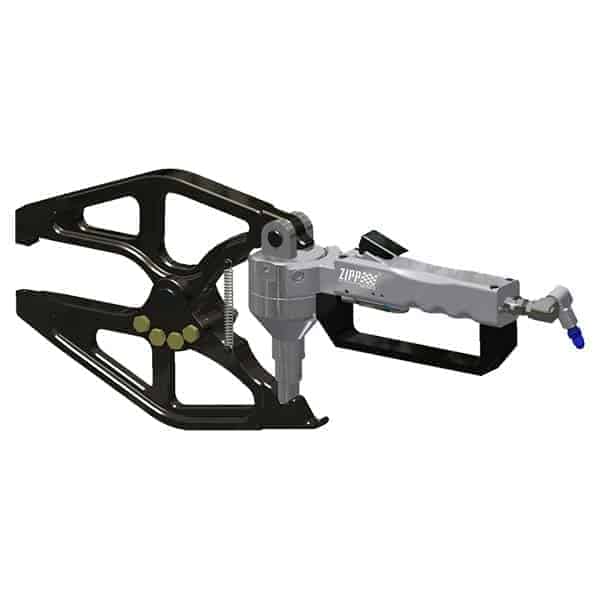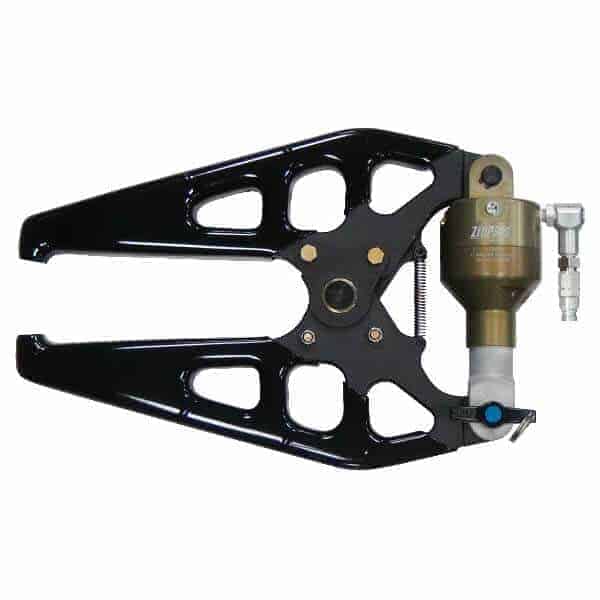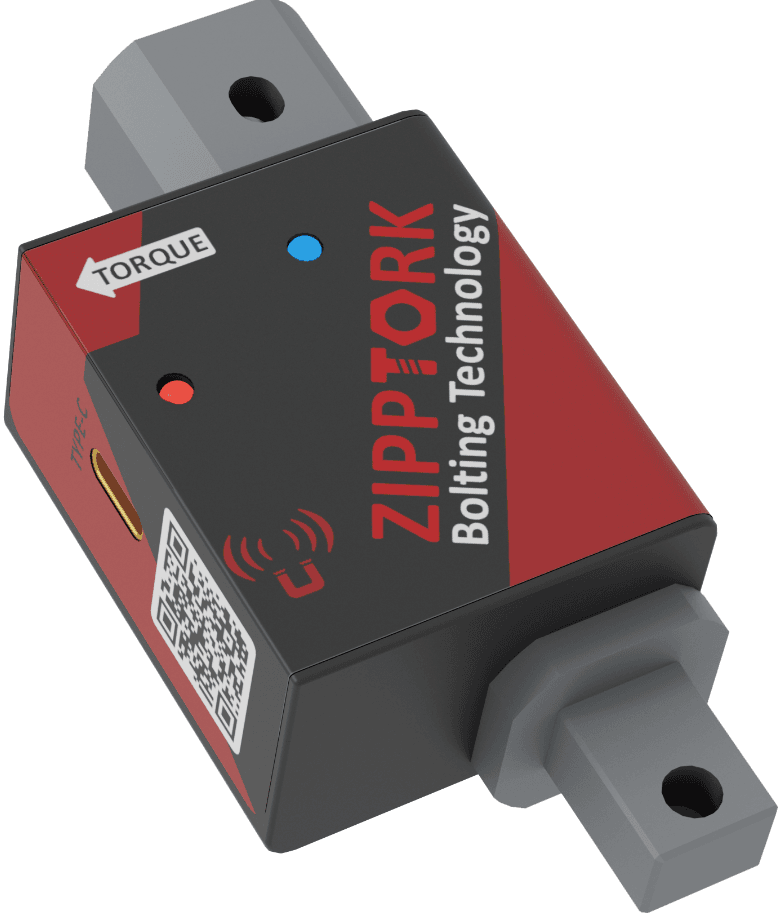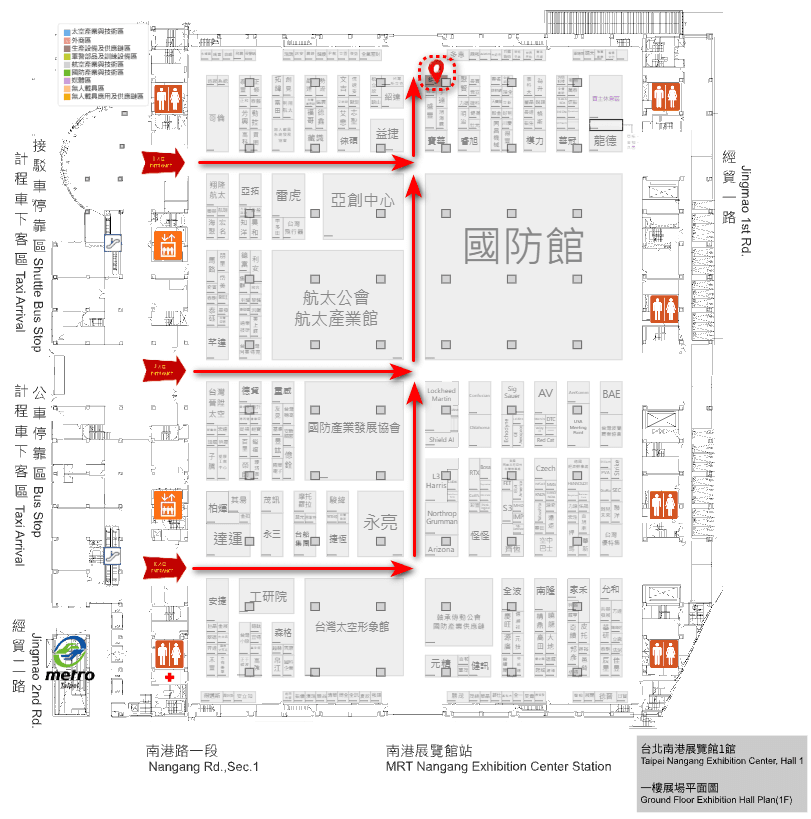Background: Clutched vs. Oil Pulse Tools
When selecting an assembly tool, engineers typically compare clutched-type tools and oil pulse tools. Each has advantages and drawbacks:
Clutched tools
Torque Range: Up to ~400 in-lbs (33 ft-lbs). Effective for low to medium torque, but requires torque arms above ~80 in-lbs due to wrist reaction.
Accuracy: ±3%, meeting most assembly specifications.
Speed: 250–2200 RPM (slower at higher torque).
Maintenance: Simple (daily oiling).
Cost: Half the price of oil pulse tools.
Oil Pulse tools
Torque Range: 4–118 ft-lbs with minimal reaction, even at high torque.
Accuracy: ±10%, often insufficient where ±3% is required.
Speed: ~5,000 RPM, resulting in faster assembly.
Maintenance: Requires oil changes twice a year by specialists, resulting in higher downtime.
Cost: Twice as expensive as clutched tools, plus ~$300/year in service.
Conclusion from traditional comparison:
Clutched tools are cheaper and more accurate, but they are limited in terms of torque and ergonomics. Oil pulse tools are faster and more ergonomic, but they are also expensive and less precise.
Where ZIPPTORK Comes In: Impact Wrench + Torque Controller
ZIPPTORK introduces a third category: the impact wrench integrated with ZIPPTORK’s intelligent torque controller and wireless torque transducer. This approach merges the raw power and durability of an impact wrench with electronic torque measurement and shut-off control.
Key Advantages
1. Wider Torque Range, No Torque Arm Required
Impact wrenches can cover torque ranges far beyond those of clutched or pulse tools (hundreds to thousands of ft-lbs). The impact wrench’s specification determines the Controllable Torque range.
With ZIPPTORK’s torque controller, even high-torque applications are precisely managed without operator wrist strain or costly torque arms.
2. Accuracy Comparable to or Better than Clutched Tools
- Clutched tools achieve ±3 to ±5% accuracy, while oil-pulse tools lag at ±10 % to ±15 %.
ZIPPTORK’s controller and traditional air impact wrench system deliver ±10% to ±15% or better accuracy, adding data traceability—a requirement for Industry 4.0 and quality audits.
3. Lower overall Cost than Pulse Tools, Lower Maintenance than both
Standard impact wrenches are mass-produced and low-cost compared to specialized clutch/pulse systems.
ZIPPTORK’s add-on controller transforms them into precision fastening systems at a fraction of the investment.
Maintenance is minimal: unlike oil pulse tools, no bi-annual oil service or downtime is required.
4. Higher Productivity, No Speed Penalty
Oil pulse tools are chosen for speed, but impact wrenches already operate at high RPM with rapid tightening.
With electronic shut-off and torque monitoring, the ZIPPTORK system prevents over-tightening while maintaining cycle speed.
5. Scalability & IIoT Readiness
Data collection and wireless transmission enable traceability across the production line.
Unlike clutched or oil pulse tools, ZIPPTORK’s solution supports integration with MES/ERP systems for Industry 4.0 compliance.
Cost-Saving Analysis
| Factor | Clutched Tool | Oil Pulse Tool | Impact + ZIPPTORK Torque Controller |
|---|---|---|---|
| Tool Price | Low | High (≈2× clutch) | Medium (standard impact + controller, still below higher torque pulse) |
| Accuracy | ±3% to ±5% | ±10% to ±15% | ±10% to ±15% (with data traceability) |
| Operator Ergonomics | Poor at >80 in-lbs, needs torque arm | Good (low reaction) | Good (controlled impact, no torque arm) |
| Maintenance | Simple, low cost | Expensive (oil change, service downtime) | Low (standard impact service only) |
| Speed | Moderate | High | High |
| Torque Range | Limited | Medium | Very wide (hundreds–thousands ft-lbs) |
| Data Traceability | No | No | Yes (IIoT-ready) |
Overall Cost Saving:
Purchase: Less expensive than oil pulse tools.
Operation: Reduced maintenance, no torque arm, no service downtime.
Quality: Eliminates rework/scrap due to torque errors through digital monitoring.
Long-Term ROI: Delivers Industry 4.0 compliance without requiring expensive tool replacements.
Choosing between clutch and oil-pulse tools has always been a trade-off between accuracy, ergonomics, speed, and cost. With ZIPPTORK’s torque controller integrated into standard impact wrenches, manufacturers no longer have to compromise. The result is a cost-effective, accurate, ergonomic, and future-ready fastening solution—making it the most economical and scalable option for today’s assembly lines.

